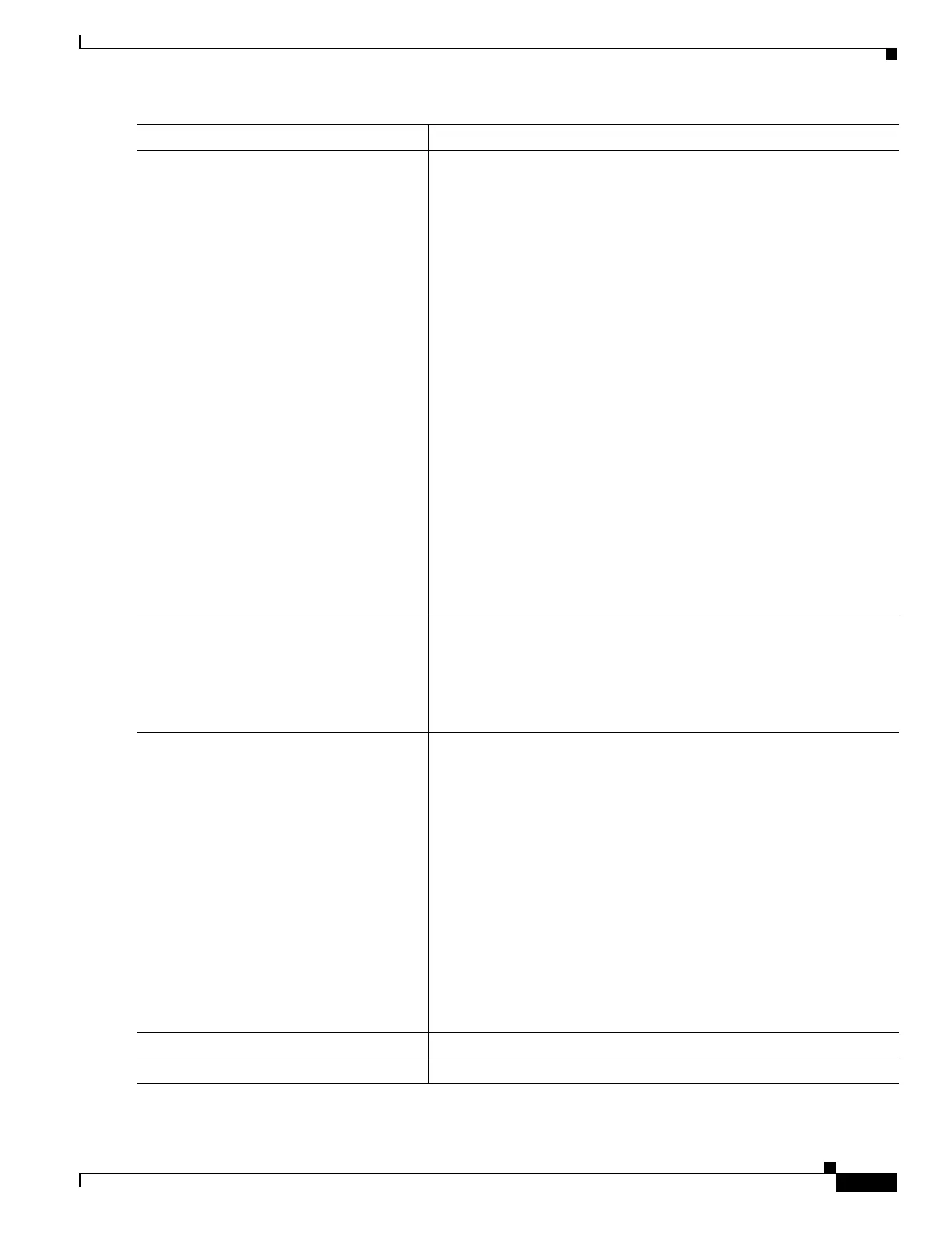26-55
Catalyst 3750 Metro Switch Software Configuration Guide
78-15870-01
Chapter 26 Configuring QoS
Configuring Standard QoS
Step 4
trust [cos | dscp | ip-precedence] Configure the trust state, which QoS uses to generate a CoS-based or
DSCP-based QoS label.
By default, the port is not trusted. If no keyword is specified when the
command is entered, the default is dscp.
The keywords have these meanings:
• cos—QoS derives the DSCP value by using the received or default
port CoS value and the CoS-to-DSCP map.
• dscp—QoS derives the DSCP value by using the DSCP value from
the ingress packet. For non-IP packets that are tagged, QoS derives
the DSCP value by using the received CoS value; for non-IP
packets that are untagged, QoS derives the DSCP value by using
the default port CoS value. In either case, the DSCP value is
derived from the CoS-to-DSCP map.
• ip-precedence—QoS derives the DSCP value by using the IP
precedence value from the ingress packet and the
IP-precedence-to-DSCP map. For non-IP packets that are tagged,
QoS derives the DSCP value by using the received CoS value; for
non-IP packets that are untagged, QoS derives the DSCP value by
using the default port CoS value. In either case, the DSCP value is
derived from the CoS-to-DSCP map.
For more information, see the “Configuring the CoS-to-DSCP Map”
section on page 26-59.
Step 5
set {ip dscp new-dscp | ip precedence
new-precedence}
Mark IP traffic by setting a new value in the packet:
• For ip dscp new-dscp, enter a new DSCP value to be assigned to
the classified traffic. The range is 0 to 63.
• For ip precedence new-precedence, enter a new IP-precedence
value to be assigned to the classified traffic. The range is 0 to 7.
Step 6
police rate-bps burst-byte [exceed-action
{drop | policed-dscp-transmit}]
Define a policer for the classified traffic.
By default, no policer is defined. For information on the number of
policers supported, see the “Standard QoS Configuration Guidelines”
section on page 26-40.
• For rate-bps, specify average traffic rate in bps. The range is 8000
to 1000000000.
• For burst-byte, specify the normal burst size in bytes. The range is
8000 to 1000000.
• (Optional) Specify the action to take when the rates are exceeded.
Use the exceed-action drop keywords to drop the packet. Use the
exceed-action policed-dscp-transmit keywords to mark down the
DSCP value (through the policed-DSCP map) and send the packet.
For more information, see the “Configuring the Policed-DSCP
Map” section on page 26-61.
Step 7
exit Return to policy-map configuration mode.
Step 8
exit Return to global configuration mode.
Command Purpose

